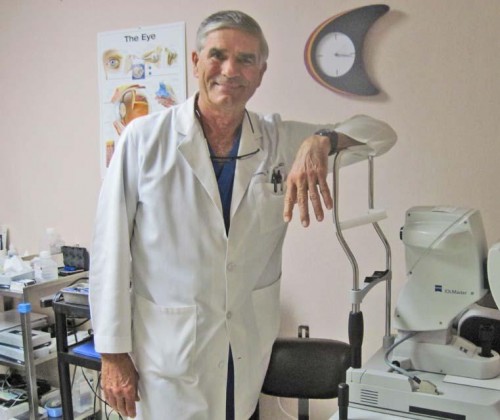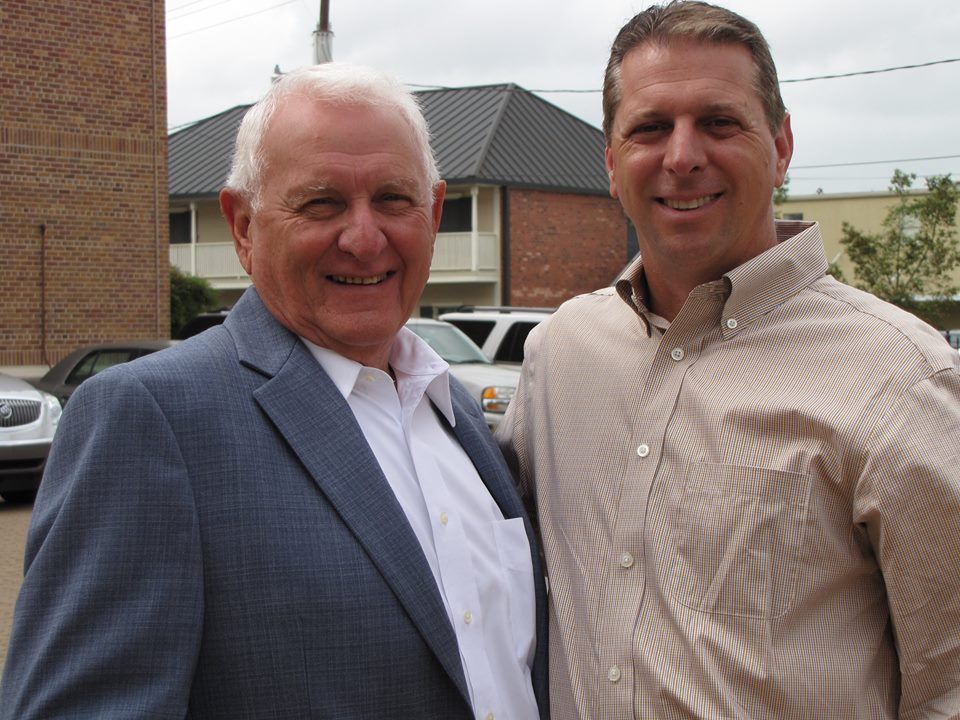Tuesday, Aug. 24
August 24, 2010Thursday, Aug. 26
August 26, 2010Ah, summer. The time of year for pool parties, flower gardens in full bloom and the most special thing of all – fogged up eyeglasses.
Yes, that was sarcasm.
Nothing can be more annoying than going from artic air conditioning to the summertime furnace and not being able to see.
Helping southeast Louisiana residents rid themselves of glasses and contacts is Quentin Falgoust, M.D. and his Advanced Eye Institutes in Houma, Thibodaux, Franklin and Morgan City.
Back in medical school Falgoust was set on specializing in urology. But after becoming a flight surgeon in the Air Force he became intrigued with ophthalmology.
“A fellow doctor in flight surgery was going into ophthalmology so he sort of got me interested in it and that’s why I became an ophthalmologist,” Falgoust said.
The young Falgoust graduated from LSU’s medical school then completed his residency at Ochsner’s. His next stop was Thibodaux in 1974 where he set down roots and opened his practice.
“Thibodaux was my first office. I went to Franklin second and then Morgan City and Houma were about the same time,” Falgoust said.
His offices evolved into Advanced Eye Institute offering local residents various options in eye care.
Today the practice sees patients suffering from cataracts, glaucoma and diabetic eye disease. Advanced Eye Institute also provides treatment for myopia (nearsightedness) as well as astigmatism and other conditions of the eye.
For those not interested in surgical vision correction, Falgoust has an optometrist on staff offering glasses and contact lenses.
But if surgery is the choice, patients have to be a little patient first.
“We do a full work up on everybody before LASIK and cataract surgery to make sure they are a good candidate,” Falgoust explained.
Not everyone can benefit from vision surgery and at times the practice does refuse LASIK patients.
“There’s a lot of criteria for LASIK that you have to fit into to have a safe surgery. I’ve refused patients because of corneal conditions or dry eyes or if they had too many prescriptions,” Falgoust said.
An Advanced Eye Institute patient has to endure a battery of tests before they can be considered for surgery. If they fail just one, they’re out.
The first test is an examination of the cornea or the front transparent part of the eye. Then comes an examination of the tears, lens and retina. Next is the PentiCam, which takes views of the front, back and other surfaces of the cornea to make sure they’re healthy.
Macular testing checks for a loss of vision in the center of the visual field due to damage of the retina. Finally a complete refraction test measures a patient’s prescription.
“We check it twice. Then if every criteria is met and you’re completely safe, we do LASIK,” Falgoust explained.
Pre-op testing can take an hour and a half or more. The surgical procedure takes 10 minutes or less.
“The actual procedure takes only seconds. The microkeratome (the instrument that creates a flap in the cornea) takes eight to 10 seconds and then the laser is never over a minute,” Falgoust said.
The patient’s prescription is programmed into the laser, which cuts it onto the cornea. Falgoust then folds the flap back in place and strokes it for two minutes.
“The procedure is not painful in any way. We use drops to numb the eye,” Falgoust explained.
As a rule Advanced Eye Institute doesn’t give patients drugs to calm them down.
“The reason is you want the patient to be alert during the surgery. You want them to participate,” Falgoust said.
After LASIK surgery the patient gets a shield to wear for a couple of nights plus artificial tears, antibiotics and steroid drops to take during the day.
Falgoust said most of his patients go back to work the next day. The same is true for his cataract patients.
Both LASIK and cataract patients are checked 24 hours after surgery to make sure everything looks OK.
As with all surgery, there can be side effects and complications. “Some people’s eyes are a little drier after LASIK. Sometimes you don’t get a perfect result after LASIK and you have to be enhanced later on. But the great majority of patients both in cataract and LASIK – in the 90 percentile – don’t have any trouble,” the doctor said.
If the description of the surgery was hard to stomach, just think, before lasers came along ophthalmologists did a procedure called Anterior Lamellar Keratoplasty or ALK.
The cap of the cornea would be completely severed and placed in a chamber on the side. The microkeratome would be reset with other depths of blades depending on the prescription. Another pass would be made removing a sliver of cornea that would be thrown away.
The cap was then placed back on the cornea to complete the surgery.
“It was a very scary operation – both for the patient and the doctor. But I did a bunch of them and many people were helped,” Falgoust said.
“Now we can correct everything with LASIK and the laser makes the corrections a lot more accurate,” he continued.
Ophthalmology has advanced over time and Falgoust and his staff have kept pace.
“I’ve had the same techs for 20 to 25 years. They’re very good. I’ve never lost a tech thank goodness,” Falgoust said.
“I love my profession,” the doctor said. “If you find a job that you love, you’ll never work another day in your life.”
Dr. Quentin Falgoust sees patients in Houma, Thibodaux, Franklin and Morgan City. The ophthalmologist has seen his profession evolve to now include state-of-the-art lasers for vision correction surgery. JENNIE CHILDS













